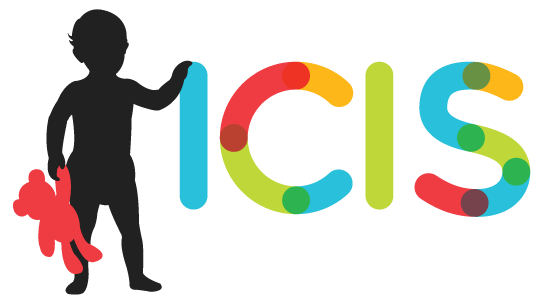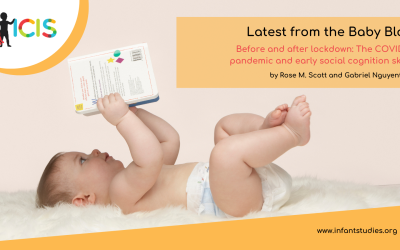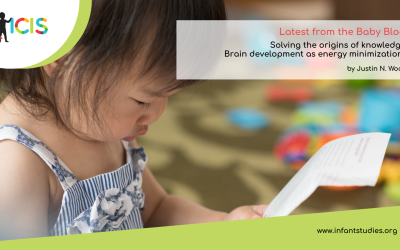Lessons learned from implementing neurodevelopmental research in The Gambia, West Africa
by Sam McCann
Convenience sampling has been ingrained in developmental psychology since its inception. In fact, the very first researchers in this field used the ultimate convenience sample—their own children. Since then, the tools we use, and the questions we ask of the developing brain have changed drastically, yet the infants involved in our research have not. Overwhelmingly, our knowledge of the developing brain is based on infants from White, middle-class families living close to well-resourced Universities in the global north. As we learn more and more about how genetics, nutrition, physical environment, caregiving practices, cultural practices, physiological stress, and countless other factors shape the developing brain, we must acknowledge that these factors differ from family to family, neighborhood to neighborhood and country to country. Recently, Lisa Oakes wrote an insightful ICIS Baby Blog addressing the issue of ‘convenience sampling’, and the need to explicitly acknowledge that studies of, for example, White middle-class infants in north America are unsurprisingly only representative of, well, White middle-class infants in north America. We need to challenge this as normal practice and prioritize the inclusion of less ‘convenient’ groups.
That is, however, easier said than done. Convenience samples are just that—convenient. Engaging with harder-to-reach families requires additional time, resources, expertise, and may also involve navigating complex ethical and governance processes. Kristin Buss and Frances Lobo recently shared their experiences on successfully engaging more hard-to-reach groups from their community around Penn State, USA. But if we are aiming for true representation of infants and children, we need to go even further—we need to go global. Thankfully, this is more feasible than ever! Neurodevelopmental tools such as fNIRS, EEG, MRI and eye tracking have undergone transformation in recent years to become more robust, portable, user-friendly, and affordable. This evolution has hugely facilitated their use in many settings previously deemed unreachable.
The Brain Imaging for Global Health study, ‘BRIGHT’ took advantage of this progress, by implementing fNIRS, EEG, and eye tracking assessments in a longitudinal study of neurodevelopment in rural Gambia, West Africa as well as the more familiar setting of Cambridge, UK. I would like to share some of our experiences, the lessons we have learned, and importantly, lessons we are still learning about the practicalities of working in a particularly unfamiliar setting.
Capping for an fNIRS assessment in the BRIGHT study in Keneba.
Lesson 1: Ask the Experts
As researchers, we are often referred to as “experts”. The reality is, we each know a lot (or at least a fair bit) about very little. My PhD was focused on brain development, but if you put me in front of an MRI scanner, I’d struggle to even switch it on! For that reason, we achieve most when we work together and share knowledge across disciplines. Successfully implementing BRIGHT required the usual scientific expertise that you would expect in a study of neurodevelopment, as well as expertise that is often assumed when we work in communities we know (or think we know) well. This included expertise in the practicalities of conducting research at our study site, knowledge of available infrastructure, cultural norms, values, and lifestyles, and understanding the day-to-day experiences of children and parents in this setting. This knowledge, and much more, was provided by colleagues at MRC Keneba, many of whom had grown up in the region and worked in the community for many years. In other settings it may be necessary to collaborate with multiple partners to ensure that all relevant expertise is represented.
Lesson 2: One Size Does Not Fit All
When implementing neurodevelopmental research in a new setting, the focus should not be on making the process identical, but rather on trying to ensure the outcome is equivalent.
Sometimes this is very intuitive. For example, translating speech-based stimuli into the primary language of the participants or ensuring people and objects in visual stimuli reflect what is familiar in the study setting. However, the impact of context may be less obvious, and infants’ responses to a given stimulus may differ across research settings for numerous reasons. Thus, it is important to work with local experts to tailor research to fit the setting in the initial study planning stages, but also to continue to think critically about the extent to which this has been achieved throughout the project, particularly when analyzing findings.
In BRIGHT we used fNIRS to measure habituation while infants listened to repeats of a sentence spoken by a female voice and then assessed the response to novelty when the speaker changed to a male voice. The pattern of activity we observed was not as expected. Infants continued to attend to the female voice and did not display a ‘novelty’ response to the male voice at any age. This could indicate developmental delay because of poverty-associated risk factors. However, it is equally possible that this is an adaptive response in this context. Given that women make up the overwhelming majority of caregivers in rural Gambia, it is possible that female voices are just more powerful in initiating neural responses in infants than male voices. In which case what we are seeing could be persistent and preferential attention towards female voices. To explore this further we are now running a small study piloting different versions of this stimulus to determine whether habituation and novelty detection is truly attenuated, or we are measuring something else.
Lesson 3: Support Local
In many low- and middle-income countries, particularly in sub-Saharan Africa, there is a long colonial history of inequitable scientific research “on” communities as opposed to research with and for communities. When we are establishing collaborations, particularly in places with such a history, we must ensure that all collaborative work is equitable and mutually beneficial to all partners. This means investing in the community, in local collaborators, and in the sustainability of the research field.
Examples of community investment could include fair training and employment opportunities for local people and ensuring the research agenda is aligned with local priorities. In terms of supporting collaborators, local data ownership, adequate representation in leadership, and opportunities for career development at every level are all important. In settings where infancy research is novel, long-term investment in the development of research leaders, as well as in the required infrastructure to deliver the research, is particularly important for the sustainability of the field. Another way to promote sustainability is to invest in the next generation of researchers. This could be done through partnering with local schools or universities. For example, establishing mentoring networks focused on STEM or social sciences, or offering internships, summer schools, or extra-curricular activities.
These practices are integral to the success and longevity of research, but they are very resource heavy. Including dedicated funds within grant budgets and/or seeking additional dedicated funds is hugely beneficial to the science and the collaboration. As an example, we’ve recently received additional funding to conduct a pilot study on caregiving practices. This work will be co-designed with representatives from the community and implemented with support from students at the University of The Gambia. We hope this will allow us to both champion the voice of our research participants and inspire the next generation of Gambian neurodevelopmental scientists.

An interactive mental health workshop demonstrating the benefit of “sharing the load” during a public engagement event in Keneba, The Gambia.
Lesson 4: True Representation
Far too often people hear “Africa” and assume a homogeneous land of extreme poverty, malnutrition, and infectious diseases. This is the Africa that is presented in news stories and charity campaigns. It is true that this is a reality for many, and advocacy for the poorest is important. That said, sub-Saharan Africa is also home to a booming middle class and incredible diversity in terms of genetics, linguistics, lifestyle, culture, and wealth. If we are to accurately represent sub-Saharan Africa in neurodevelopmental research, we must aim to also represent these complexities as opposed to propagating poverty-focused assumptions. One limitation of BRIGHT has been that the Gambian cohort is solely made up of families living in one rural district. The inclusion of a higher-income urban Gambian cohort was beyond the original remit of BRIGHT, but will be invaluable for contextualizing our findings in the future.
Lesson 5: Be Ambitious
Personally, the greatest lesson I learned while working in The Gambia was simply that there is always a way. Plans don’t necessarily work out the first time (or let’s be honest – they often don’t work out the second, third, or fourth time) but given adequate time, resources, expertise, and enthusiasm, very few good ideas are impossible. When designing studies, we need to move away from limiting ourselves by what we deem doable or convenient, and move toward focusing on what is important and working out how to make that happen.
Asking experts as opposed to making assumptions, tailoring research to fit the setting, supporting local people and institutions, focusing on true representation, and thinking BIG. These lessons – learned in The Gambia – are equally relevant 10 miles or 10,000 miles outside of the ‘convenient’ zone.

The BRIGHT Study team in Keneba with visiting researchers from BRIGHT UK.
About the Author

Sam McCann
King’s College London & Medical research Council Unit, The Gambia at the London School of Hygiene and Tropical Medicine
Sam McCann is a Postdoctoral Research Associate and Neurodevelopment Lead on the INDiGO trial. INDiGO is a randomised controlled trial based in Gambia which aims to determine the most efficacious way of using multiple micronutrient supplementation to prevent nutritional deficiencies in early infancy and support neurodevelopment. Sam completed her PhD in Global Health at King’s College London (2019-2021), prior to which she was based in The Gambia, where she led the day-to-day running of the BRIGHT study (2016-2019). Sam has an MSc in Public Health from the London School of Hygiene and Tropical Medicine and a BSc in Medical Neuroscience. Her main research interest is mitigating the impact of poverty on early child development.





